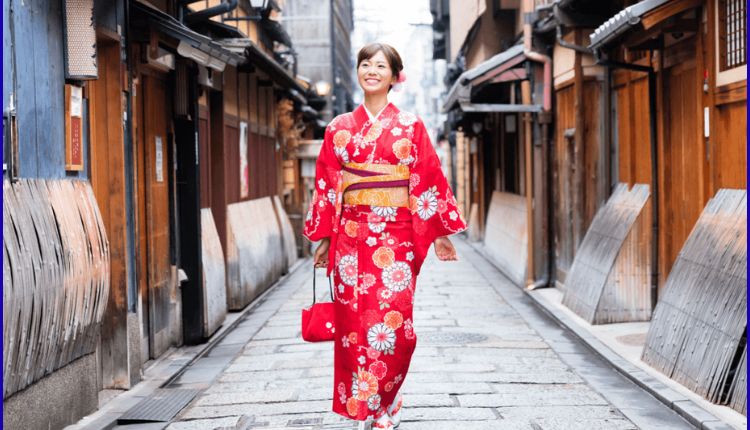Originating from Japan, the kimono party is a symbol of beauty and ancient intensity. When humans come together to rejoice in this conventional apparel, it creates a visual spectacle and fosters cultural appreciation. A kimono birthday party, whether held in Japan or remote places, offers an immersive revelry that blends heritage with hospitality. This type of event gives a unique platform for people to connect to Japanese customs, understand the meaning behind the clothes, and revel in the grace of a centuries-old lifestyle.
- The Cultural Significance of the Kimono
- Planning a Kimono Party
- Kimono Selection and Styling Tips
- Activities and Entertainment at a Kimono Party
- Food and Drink Ideas for a Kimono Party
- Kimono Etiquette and Cultural Sensitivity
- Hosting a Kimono Party Abroad
- The Kimono Party as a Fusion of Past and Present
- Kimono Parties for Special Occasions
- Preserving Craftsmanship and Supporting Artisans
- Challenges and Misconceptions About Kimono Parties
- The Emotional and Aesthetic Impact of a Kimono Party
- The Future of Kimono Parties
- Conclusion
The Cultural Significance of the Kimono
The kimono party holds deep cultural roots in Japanese society. Historically worn by the useful resource of all commands and genders, the kimono has developed through the years; however, its importance has in no way diminished. It represents not only the most effective Japanese aesthetics but also embodies recognition, location, and identity.
Different patterns, colors, and approaches to wearing the kimono can symbolize marital fame, season, or maybe the wearer’s social standing. A kimono birthday celebration allows for revival and holds this intricate cultural symbolism, making it reachable to new generations and international audiences.
Planning a Kimono Party
Organizing a kimono party celebration calls for thoughtful planning and attention to detail. The venue needs to mirror the beauty of the occasion, ideally incorporating traditional Japanese elements like tatami mats, sliding doorways, or lawn perspectives.
Invitations can be dispatched with clean, floral designs that hint at the traditional motif of the kimono. Décor wants to include lanterns, cherry blossoms, and soft lighting to beautify the atmosphere. Hosts can also keep in mind hiring a cultural expert or kimono stylist to help visitors understand the proper manner to put on and admire the garb.
Kimono Selection and Styling Tips
Choosing the right kimono party is a massive part of preparing for a kimono birthday celebration. While traditional silk kimonos are the most proper, lighter cotton variations like yukata may be more comfortable for informal or summertime occasions. Guests need to remember the event’s formality, season, and concern while choosing a kimono.
Color coordination, appropriate footwear like zori or geta, and the right tying of the obi (sash) are all essential factors. Hairstyling additionally performs a critical function, with many selecting conventional updos decorated with ornamental hairpins known as kanzashi.
Activities and Entertainment at a Kimono Party
A kimono birthday party can encompass some cultural activities that entertain and train. Traditional Japanese tea ceremonies provide a serene and non-secular start to the event, even as flower associations (ikebana) or calligraphy stations permit guests to engage with Japanese painting bureaucracy.
Music may be furnished with the useful resource of units, just like the koto or shamisen, creating a real historical atmosphere. For a greater interactive detail, a kimono runway show or contest can allow participants to show off their clothing and creativity. Storytelling or brief lectures on kimono records can also deepen visitors’ appreciation.
Food and Drink Ideas for a Kimono Party
No Japanese gathering is complete without a considerate culinary desire. A kimono birthday party menu can encompass a series of conventional Japanese dishes along with sushi, sashimi, tempura, and miso soup. Seasonal offerings are specifically favoured in the Japanese way of life, so incorporating elements that replicate the 365 days provides authenticity.
Sweets like mochi, dorayaki, or wagashi provide pleasant dessert options. In terms of liquids, green tea, sake, or even plum wine (umeshu) are suitable selections. Presentation is essential—meals must be served in elegant lacquerware or ceramic dishes that mirror the minimalist beauty of Japanese format.
Kimono Etiquette and Cultural Sensitivity
While kimono events are fun and festive, they require attention to cultural etiquette. Guests should treat the kimono with respect, making sure they place it well and avoiding movements that can appear disrespectful.
For example, the left element of the kimono needs to constantly wrap over the right, reversing that which is historically reserved for the deceased. Moreover, immoderate add-ons or current modifications need to be approached carefully, especially if the celebration is meant to have amusing traditions. Cultural sensitivity, mixed with an open spirit of studying, makes for a more respectful and enriching experience.
Hosting a Kimono Party Abroad
In recent years, kimono parties have acquired popularity outside of Japan. These global celebrations regularly incorporate collaborations with Japanese cultural centers, embassies, or community businesses. Hosting a kimono birthday celebration in distant places may be a powerful form of cultural trade, encouraging cross-cultural understanding.
To preserve authenticity, hosts may additionally import conventional devices, lease kimono dressers, or employ Japanese-speaking visitors or performers. While the cultural context may also vary, the central subjects of beauty, lifestyle, and togetherness remain everyday.
The Kimono Party as a Fusion of Past and Present
Modern kimono occasions regularly aggregate a way of life with modern-day flair. Some activities feature DJs and mild suggestions while nonetheless maintaining the kimono get-dressed code. Others might integrate style-ahead takes on the conventional garment, encouraging creativity and personal expression.
This fusion lets the kimono remain relevant in modern-day society, even as it honours its historical past. The stability of a number of the past and the present is what offers a kimono celebration its particular appeal, making it an undying celebration appropriate for all generations.
Kimono Parties for Special Occasions
Kimono parties are perfect for celebrating milestones, such as birthdays, anniversaries, graduations, or cultural holidays like Hinamatsuri (Doll’s Festival) or Tanabata (Star Festival). Weddings or engagement events held in kimono attire add a sense of ceremony and beauty.
These sports may be deeply private, with custom-designed problem matters that mirror the man or woman while nevertheless embracing conventional aesthetics. Group picture periods in scenic gardens or temples can create lasting memories and provide full-size keepsakes for the tourists.
Preserving Craftsmanship and Supporting Artisans
A kimono party no longer promotes a way of life but also helps the artisans and craftspeople who hold conventional techniques alive. Kimono making entails weaving, dyeing, and embroidery, often finished by hand. Hosting or attending a kimono birthday party raises the focus of these abilities and creates a call for authentic garments.
Some events might also invite craftsmen to illustrate their work or maybe sell their handmade gadgets. Supporting local or Japanese kimono agencies facilitates holding this painting shape and maintaining the groups that depend on it.
Challenges and Misconceptions About Kimono Parties
Despite their beauty, kimono occasions aren’t without disturbing conditions. Sourcing actual kimonos may be highly expensive or logistically hard, particularly in rural Japan. Additionally, there are misconceptions approximately cultural appropriation in place of appreciation.
To navigate this respectfully, hosts should prioritise education and authenticity. Including Japanese voices within the planning and execution of the event can help make certain that the birthday celebration stays thoughtful and inclusive. Encouraging individuals to study the records and importance of what they place on goes a long way in promoting mutual appreciation.
The Emotional and Aesthetic Impact of a Kimono Party
There is something undeniably emotional about approximately entering into a kimono. The enjoyment may be transformative, instilling a sense of dignity and connection to history.
A kimono birthday party magnifies this feeling through growing a shared area of beauty and reverence. Guests often leave with a greater appreciation for the Japanese way of life and a deeper connection to those around them. The sleek actions, subtle interactions, and serene surroundings all contribute to a memorable and good-sized experience.
The Future of Kimono Parties
As a hobby on cultural occasions continues to broaden globally, kimono parties are poised to become even more popular. Digital systems make it less complicated to discover approximately kimono etiquette, hire garments, and connect with professionals.
Virtual kimono activities have moreover emerged, permitting humans to have a good time together from super elements of the sector. With the proper approach, the future of kimono activities seems colourful, inclusive, and inspiring. Whether rooted in subculture or infused with modernity, the kimono birthday celebration is still a party of artwork, identity, and elegance.
Conclusion
A kimono party is more than a fashion statement—it’s miles a bridge to the beyond, a party of knowledge, and a tribute to Japanese history. Whether professional in a conventional tea house or a modern feast corridor, the elegance and cultural richness of a kimono party leave an enduring influence. As those sports expand in reputation across the arena, they remind us of the splendour that lies in subculture, the satisfaction of shared reports, and the undying charm of the kimono.





